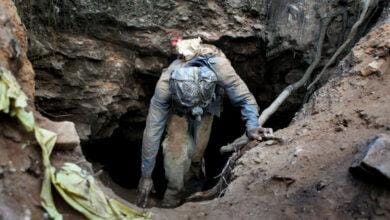South Africa’s Gold Fields is setting aside pursuit of new acquisitions for a year as it focuses on its existing operations and nearby prospects instead, the bullion producer’s chief executive told Reuters late on Tuesday.
Gold Fields’ finances might be “a little bit negative” this year before likely improving in 2019, when the company should begin to reap the rewards from two years of heavy investing, Nick Holland said.
In March, Gold Fields announced it was spending $202.6-million on a partnership with Canadian miner Asanko Gold, part of a strategy of buying cash generative, operative mines.
But Gold Fields plans to hold off on additional acquisitions through at least early next year. “We don’t want to really stretch ourselves,” Holland said in an interview at the International Gold & Silver Symposium in Lima, Peru
“The strategy of the company now is more focused on organic brownfields, near-mine growth, in and around where we are,” Holland said.
Gold Fields operates producing mines in South Africa, Ghana, Australia and Peru. It recently submitted an environmental-impact assessment for its proposed Salares Norte mine in Chile, though construction would not likely begin until 2020, Holland said.
The company might seek out a junior partner to help financeSalares Norte, which is estimated to cost $850-million.
“That’s a big check to pay,” Holland said. “We want to build it, for sure…we’re just trying to figure out if we should do it on our own.”
Autonomous Mining
Holland warned that costs for the global gold mining industry will likely start rising on higher fuel prices, wages and inflation more broadly, while ore grades continue to fall and remaining reserves become harder to reach.
Holland said he expects annual global gold production going forward to plateau at current levels of around 100-million ounces.
“The way we’ve mined over the past 50 years is not the way we’re going to mine in the future,” Holland said. “We are going to have to look at autonomous mining, we are going to have to look at different ways of extracting the ore.”
Gold Fields has already deployed remotely operated or semi-autonomous equipment in Australia, Ghana and South Africa, and plans to use more going forward, Holland said, noting deep cost savings for the iron ore industry thanks to automation.
Technological advances are also helping Gold Fields extend the life of its Cerro Corona mine in northern Peru, through 2030 or maybe longer, Holland said.
“We’re looking at all of our mines in terms of life extension,” Holland said. “Most have potential that we haven’t fully unlocked. And that’s the more cost-effective way for us to grow.”
Holland added that the company’s South Deep mine in South Africa appears to be stabilising. “I think things are improving slowly,” Holland said.
South Deep, the company’s last South African asset, has faced numerous operational obstacles in a tough geological setting 3 km (2 miles) below the surface and made a loss of R337.6-million ($27-million) in 2017.









